Pay a homeschool visit to a World Heritage Site from one of our countries-of-the-week and learn some great history and geography along the way. This week: Koutammakou, the Land of the Batammariba in Togo.
🇺🇸 🥂 HOMESCHOOL TOASTING TRADITIONS the Whole Year Round
Why not begin the delightful tradition of offering a toast around your family table each week. This classic Independence Day toast is a perfect way to get started.
📚 LEARNING THE LIBRARY: The Historical & Geographical 900s
Explore your local library and the whole universe of knowledge with our homeschool tour of the Dewey Decimal System. This month: the Historical & Geographical 900s.
🖋 🇺🇸 WONDERFUL WORDS: William Emerson on “A Nation’s Strength”
“Not gold but only men can make / A people great and strong.” (Our patriotic homeschool poem-of-the-week, from William Ralph Emerson, for Independence Day.)
🗓 🎆 🇺🇸 HAPPY HOMESCHOOL JULY from the River Houses!
Happy homeschool July! Here are some little lessons, teaching traditions, and wonderful educational opportunities you and your students can watch for this month.
🏡 WELCOME! (Pinned Post)
First time visitor? We post a wide range of easy-to-use educational ideas and “little lessons” that will enrich your homeschooling schedule all through the year. Please subscribe to our free homeschool newsletter! (It’s just one message a week with no spam.)
There’s a wealth of wonderful material here on our website — everything from homeschool astronomy to books and libraries to language and literature to geography, natural history, homeschool calendars, and more. The materials we’re developing are going to become the foundation for a new type of homeschool network made up of friendly local groups called “Houses” (just like in Harry Potter). Make yourself at home! 😊
🗓 QUICK FRESHES for Homeschool Families – Week of 30 June 2024
Great homeschool teaching tips and wonderful little lessons for the week ahead, including: Independence Days, moon months, Continental armies, scientific masterpieces, undeciphered disks, Dewey decimals, Thai rivers, a toast to a goose, and more!
🌎 🇺🇸 SUNDAY STATES: Wyoming, Tanzania, Togo, and More
Take a homeschool tour of the U.S. states and the countries of the world with the River Houses. This week: Wyoming, Tanzania, Thailand, Timor-Leste (East Timor), and Togo.
🌠 JOIN A HOMESCHOOL SCIENCE PROJECT for International Asteroid Day!
You and your students can help astronomers study the shapes and orbits of real asteroids in space, right from the comfort of your little home academy. How cool is that?
🦅 FRIDAY BIRD FAMILIES: Tropical Tanagers and the Western Spindalis
Come along on our homeschool tour of North American birds and pick up some great science and natural history lessons along the way. This week: the tropical Tanagers and the peculiar Western Spindalis.
🔭 ☄️ HOMESCHOOL ASTRONOMY: The Most Beautiful Objects in the Universe
Happy birthday to the great French astronomer Charles Messier (1730–1817), who cataloged some of the most beautiful nebulae, star clusters, and galaxies in the universe — so he could ignore them.
🌏 🇹🇯 WEEKLY WORLD HERITAGE: Ancient Sarazm in Tajikistan
Pay a homeschool visit to a World Heritage Site from one of our countries-of-the-week and learn some great history and geography along the way. This week: the Proto-Urban Site of Sarazm in Tajikistan.
🗓 QUICK FRESHES for Homeschool Families – Week of 23 June 2024
Great homeschool teaching tips and wonderful little lessons for the week ahead, including: Cosmic catalogues, children’s authors, asteroid days, extraordinary explorers, momentous struggles, Swiss rivers, a toast to your local birds, and more!
🌎 🇺🇸 SUNDAY STATES: Idaho, Switzerland, Tajikistan, and More
Take a homeschool tour of the U.S. states and the countries of the world with the River Houses. This week: Idaho, Switzerland, Syria, Taiwan, and Tajikistan. Open up your atlas and almanac and follow along with us!
🖋 🚂 WONDERFUL WORDS: “It was late June”
“And for that minute a blackbird sang / Close by, and round him, mistier, / Farther and farther, all the birds / Of Oxfordshire and Gloucestershire.” (Our timely homeschool poem-of-the-week, from Edward Thomas, for late June and the birds of summer.)
🌕 HOMESCHOOL “CITIZEN SCIENCE” PROJECTS for June
Our June full-moon report on the many “citizen science” projects around the world that you and your students can participate in from the comfort of your little home academy. Pick one and get started today!
🦅 FRIDAY BIRD FAMILIES: Wood-Warblers (Part II)
Come along on our homeschool tour of North American birds and pick up some great science and natural history lessons along the way. This week: the tiny and colorful Wood-Warblers (Part II).
🗓 ⛱ SUMMER IS HERE! (Astronomically Speaking)
Summer is here! If you’re in the northern hemisphere, that is. If you’re in the southern hemisphere, winter is here! Happy June solstice to homeschoolers everywhere!
🌏 🇱🇰 WEEKLY WORLD HERITAGE: The Dambulla Temple in Sri Lanka
Pay a homeschool visit to a World Heritage Site from one of our countries-of-the-week and learn some great history and geography along the way. This week: the Rangiri Dambulla Cave Temple in Sri Lanka.
🔎 HOMESCHOOL RESEARCH & NEWS – June 2024
Our June roundup of some recent academic research and news about home education in the United States and around the world, with links to sources. We have four items this month, on the growth of homeschooling; homeschooling psychology; homeschooling in Lithuania; and homeschooling in China.
🗓 QUICK FRESHES for Homeschool Families – Week of 16 June 2024
Great homeschool teaching tips and wonderful little lessons for the week ahead, including: Father’s Days, summer solstices, June poems, old schools, brave battles, Great Seals, Sri Lankan rivers, a toast to merry hearts, and more!
🌎 🇺🇸 SUNDAY STATES: Washington, Sri Lanka, Sweden, and More
Take a homeschool tour of the U.S. states and the countries of the world with the River Houses. This week: Washington, Sri Lanka, Sudan, Suriname, and Sweden. Open up your atlas and almanac and follow along with us!
🖋 🏰 HAPPY FATHER’S DAY WEEK from Henry Wadsworth Longfellow
“A whisper, and then a silence: / Yet I know by their merry eyes / They are plotting and planning together / To take me by surprise.” (Our paternal homeschool poem-of-the-week, from Henry Wadsworth Longfellow, for Father’s Day, the third Sunday in June.)
🌅 HOMESCHOOL SEASONS: Watch the Summer Solstice at Stonehenge
Follow a live broadcast of the summer-solstice sunset and sunrise at Stonehenge, the ancient astronomical landmark in southern England.
🇺🇸 HOMESCHOOL HOLIDAYS: Happy Flag Day!
Flag Day (June 14th every year) celebrates the date in 1777 when Congress established the Stars & Stripes as the national flag of the new United States.
🦅 FRIDAY BIRD FAMILIES: Wood-Warblers (Part I)
Come along on our homeschool tour of North American birds and pick up some great science and natural history lessons along the way. This week: the tiny and colorful Wood-Warblers (Part I).
🪙 FREE HOMESCHOOL TEACHING MATERIALS from the U.S. Mint!
The U.S. Mint has a wide variety of free printable educational materials that you can easily drop into your homeschooling schedule this summer. Why not look them over and expand your students’ numismatical horizons.
![[Flag of Togo]](https://riverhouses.org/wp-content/uploads/2024/07/flag-togo-150x93.png)

![[Dewey Decimal Classes]](https://riverhouses.org/wp-content/uploads/2023/02/dewey-decimal-classes-2-150x90.jpg)
![[Constitution Stamp 1987]](https://riverhouses.org/wp-content/uploads/2022/07/we-the-people-stamp-1987-150x82.jpg)
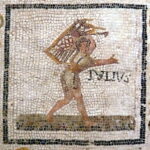
![[The River Houses]](https://riverhouses.org/wp-content/uploads/2023/11/emoji-house-with-garden-150x150.png)
![[Weekly Homeschool Almanac]](https://riverhouses.org/wp-content/uploads/2022/08/calendar-2-150x85.jpg)
![[Wyoming State Flag]](https://riverhouses.org/wp-content/uploads/2021/07/flag-wyoming-1917-150x105.png)
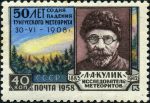
![[Homeschool Science & Nature Study]](https://riverhouses.org/wp-content/uploads/2022/07/birds-tanagers-150x101.png)

![[Flag of Tajikistan]](https://riverhouses.org/wp-content/uploads/2022/06/flag-tajikistan-150x75.png)
![[Idaho State Flag]](https://riverhouses.org/wp-content/uploads/2021/06/flag-idaho-1957-150x118.png)
![[Blackbird Stamp 1966]](https://riverhouses.org/wp-content/uploads/2022/06/blackbird-stamp-uk-1966-150x90.jpg)
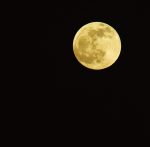
![[Homeschool Science & Nature Study]](https://riverhouses.org/wp-content/uploads/2022/06/birds-warblers-ii-150x84.png)
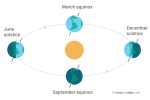
![[Flag of Sri Lanka]](https://riverhouses.org/wp-content/uploads/2022/06/flag-sri-lanka-150x75.jpg)
![[Homeschool Research Icon]](https://riverhouses.org/wp-content/uploads/2019/08/research-150x80.jpg)
![[Washington State Flag]](https://riverhouses.org/wp-content/uploads/2021/06/flag-washington-1923-150x89.png)
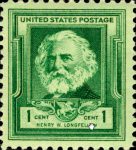
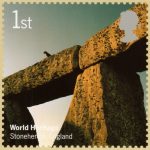

![[Homeschool Science & Nature Study]](https://riverhouses.org/wp-content/uploads/2022/06/birds-warblers-150x98.png)
![[U.S. Mint]](https://riverhouses.org/wp-content/uploads/2019/06/mint-logo-150x150.png)